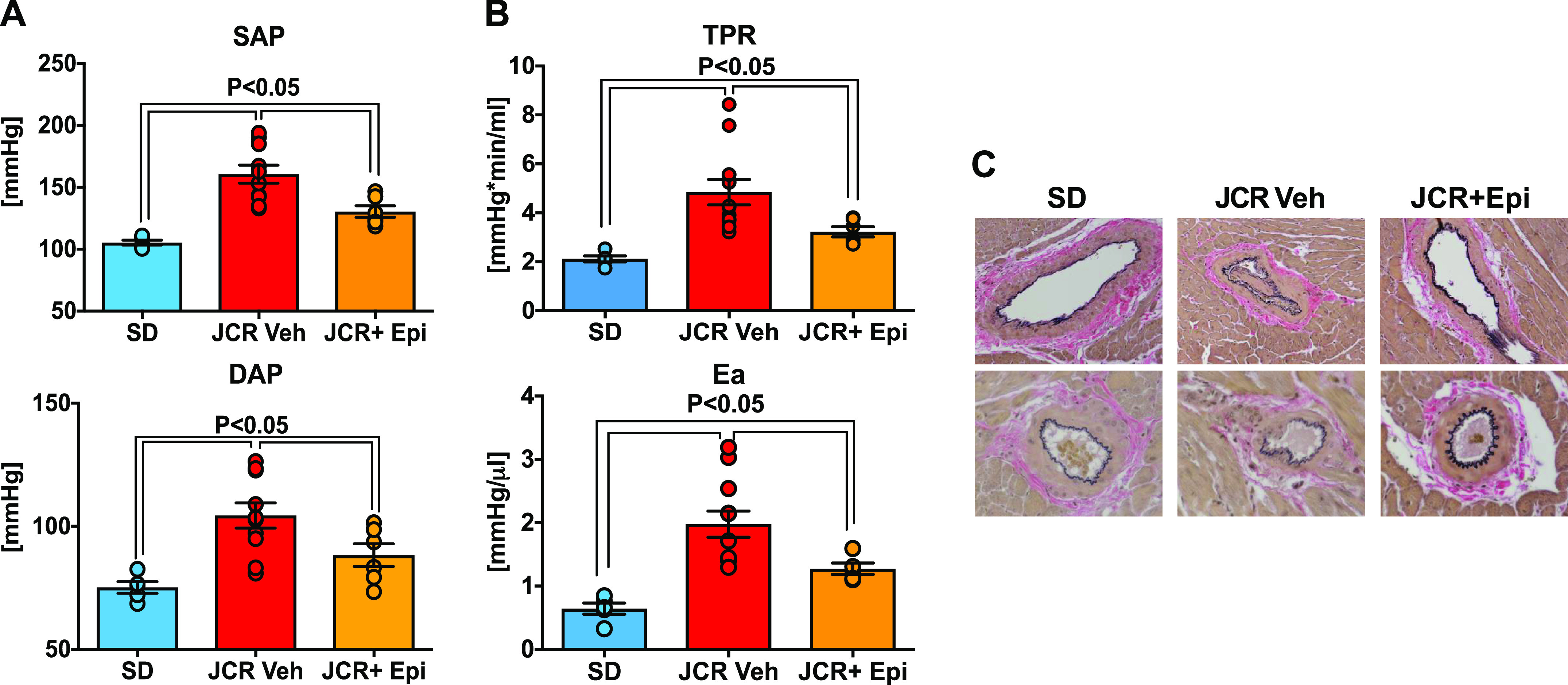Figure 7.

Epiandrosterone (EPI) decreases blood pressure, arterial elastance (Ea), and neointimal growth in coronary arteries from JCR rats. Systolic (SAP; A, top) and diastolic (DAP; A, bottom) blood pressures, total peripheral resistance (TPR; B, top), and Ea (B, bottom) were higher in JCR than Sprague-Dawley (SD) rats. EPI administration to JCR rats decreased blood pressure, resistance, and elastance (SD, n = 5 samples; JCR-veh, n = 11 samples; JCR-Epi, n = 6 samples). C: representative images of Verhoeff-Van Gieson staining of elastin in transverse midplane sections of heart showing large (epicardial) and small coronary arteries. Occlusive growth and rupture/break of the internal elastin laminae are seen in sections from JCR rats (n = 3 samples) but not JCR rats treated with EPI (n = 3 samples) or SD rats (n = 3 samples) rats. Data are presented as means ± SE.
